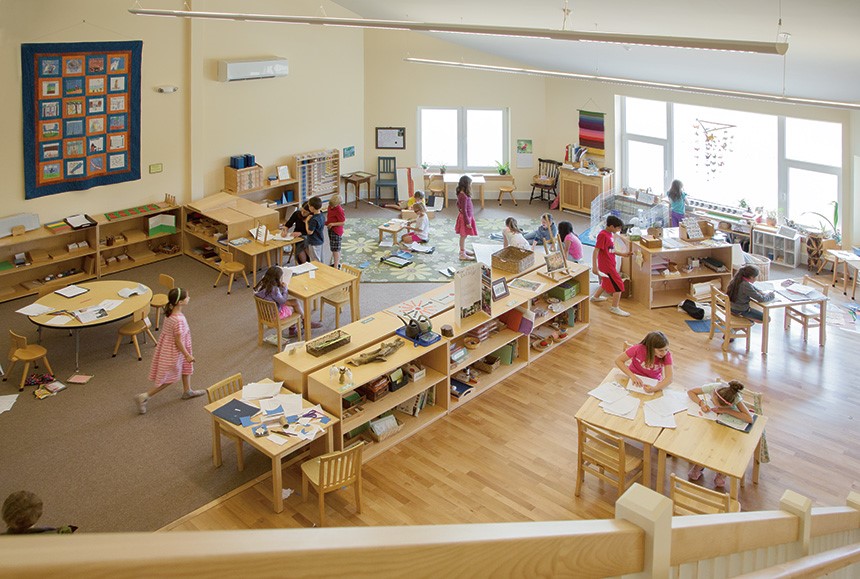Am I ready? Before students enter the class from the first day of school to the last, it is the goal of most teachers to have the classroom ready and prepared to receive them. In addition to being functional, it should also be aesthetically appealing and inviting. Observers of a Montessori classroom are often startled to see the mixture of work and learning styles being implemented simultaneously, yet impressed at the students’ abilities to manipulate and manage the classroom independent of the teacher. There is no mystery because the Montessori classroom is purposefully prepared to foster this exact behavior using six standards that all teachers may be able to identify with them regardless of background: freedom, structure and order, beauty, nature and reality, social environment, and intellectual environment. Additionally, each principle answers a question that I had or have been asked regarding effective classroom management and support of instruction. Here are the first three principles, and an example of how they are represented in my class.
- Question: How do I get my students to realize what they need to do and do it without unnecessary hand holding?
Answer: Freedom – Since the environment belongs to the children, they are free to move around in it and modify as needed. Since students choose to work individually or in groups, there are no traditional desks in my class. We have a mixture of tables and chairs (some high, some low; some long, some short) that allow for a variety of work arrangements based on the needs of the task. We also have a large amount of open floor space to allow students proper space for larger works. Students have snack, water, and bathroom breaks at their discretion. They also have the freedom to choose their works with the responsibility that they are working at their ability level. If not, I help guide them to that level of work. The ability to manage their time and choose meaningful work is a lifelong skill that they will continue to utilize.
- Question: How do I get my students to manage themselves and stop asking me “How do I” questions?
Answer: Structure and Order – Structure the environment in a way that supports independence from the adult. In my class, the only areas that are not permissible for the child is my Assistant’s desk and my desk. Everything else belongs to the students. Tables and chairs are child size. Materials on the shelves can be accessed and manipulated by a child as young as six. When needed, children are given lessons on skills that will support independence. For example, I have given lessons on how to properly tear tape off of a dispenser, sharpen pencils with the electric sharpener, and reset a timer. With this comes the responsibility of ownership. Students are expected to return materials to the designated area beautifully prepared for the use of the next person. As the children learn to maintain the structure and order in the class, they take more ownership for the care of the environment and the materials in it.
- Question: How do I create an environment that the students feel good being in?
Answer: Beauty- I agree with Hungerford (1878) who penned the famous quote “Beauty is in the eye of the beholder” and the elements of beauty, however defined, should be present in the classroom. My class is painted and given a touchup throughout the year as needed by parents, custodial staff, or me so that it always looks fresh and clean. I have framed Monet’s on my wall (purchased from Ross on clearance) with other academic materials that can look like art (ie. maps, replicas of the Constitution, a Children’s Art Gallery). All of the work materials are clean and organized in a geometrically appealing way that pleases the eye. Carpet fresh is used and doors are opened to keep offensive odors at bay. Clutter is not permitted. Fresh flowers are invited into the class for any occasion. The children take great pride in the presentation of their class and restore the class to its initial beauty at the end of the day.
Hopefully, this information will help us reflect on how we are preparing our classes throughout the year. Reflection on the environment can be especially useful as we adjust and settle into our “normal”. Watch out for the next 3 principles, which I will get to you later this month.
Recommended readings by Dr. Maria Montessori:
The Secret of Childhood (1936)
To Educate the Human Potential (1947)
The Absorbent Mind (1949)
Web search phrase: The prepared environment and Montessori










Comments 6
Yolanda so I have to tell you I love the fresh flowers idea. We have a teacher down the hall who simply put a plant in the hallway on a old chair, and when the kids came into the room they felt warm and at home. One of our football players told me the plant made him feel like he wasn’t walking into a torcher chamber every day and he appreciate it. Kind of funny coming from a monster full back but so true that the environments we create help to educate.
Thank you. It is amazing how little it takes to make a comfy environment.
Yolanda, I really love your post. As a mentor teacher, I have a Montessori teacher on my caseload and I am so excited to share this with her. I know she will love this. She is trying to transition into a more traditional environment working in my school district. I am inspired by your post. I will invite her to join this conversation for my September blog. I told her there is a little Montessori in all of us. I always felt a strong connection with the Montessori philosophy and way of teaching our scholars, especially spending time at a Montessori school early in my career (special summer project). What I truly love about Montessori is its authenticity approach to education and how its strives to help all children reach their extraordinary potential intellectually, emotionally, socially, creatively, and physically, so that they can pursue lives full of meaning and joy.
Thank you for your response and your input. I will say I appreciate your openness and willingness to consider the Montessori philosophy and appreciate it for what it is. Your student teacher is blessed to have you. Please let her know to stay encouraged. I work in a public Montessori school and I understand her position. Let me know if there is something I can do to help her along.
Yolanda, I think we’re on the same page in a lot of ways. My one class rule, that I got from Dave Burgess of Teach Like a Pirate fame, is: Don’t be mean. We take one thing at a time, seek improvement not perfection, and I let a lot slide. Over time, my classes settle into a nice community. Well, actually, this year is taking longer than normal. But the success when it comes is based on freedom, like you answer to question one.
Thank you for your comments. I think it highlights the differences between delivery method and effective teaching principles. I think the principles regardless of the delivery method (ie. Traditional vs. Montessori).